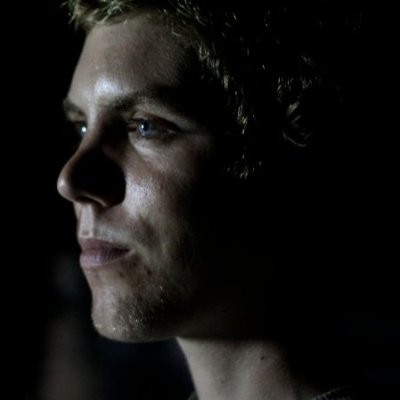There was a time when Mikey Smith would show up with his keyboard to the Meadowlark’s Monday-night jazz jam not knowing if he’d have a drummer to play with. Now there are nights when nine or ten different drummers show up, each hoping they’ll have a chance to play more than one song.
The explosion in popularity has been a wild ride for Smith, who never anticipated that the weekly jam, which he helped launch seven years ago, would become a mainstay of Denver’s jazz scene. But Monday nights in the Meadowlark’s cozy basement bar aren’t just filled with a bunch of musicians who gather to play with and support other like-minded players, nor is the crowd mostly made up of jazzheads. Instead, the event has become one of the hippest scenes in the city for all sorts of people, aficionados or not.
From jazz in the vein of Miles Davis and John Coltrane to more modern and funky renditions that riff off of hip-hop beats, the music played is energetic, bouncing off the Meadowlark’s stone walls with an in-your-face kind of intimacy. Oftentimes, the bar gets so packed by 10 p.m. that it can be difficult to get a good view of the band. As a result, the jam presents a choice opportunity for up-and-coming musicians to test their chops in front of a diverse crowd; in turn, it’s introduced a lot of casual listeners to the excitement of great live jazz.
“We have people who come up to us all the time and say, ‘I didn’t know I liked jazz, but this is pretty cool,’” says Smith. “To me, that makes me feel like we’re accomplishing something. The mission is to make jazz exciting — and [to teach] people not to think of jazz as just something they listen to in the background of a restaurant or while they’re taking a bubble bath.”
Still, it took a few years for the night to really develop a following. And although Smith now acts as bandleader and pianist for the house band — which plays the first set every Monday before the floor opens up to outside musicians — starting the jam wasn’t his idea.
In 2009, local talent buyer Jonathan Bitz (who now co-owns Syntax Physic Opera) contacted Cole Rudy, a classmate of Smith’s at the University of Colorado Denver, about playing jazz once a week in RiNo. Rudy then asked Smith to come on board.
At the time, the Meadowlark was only a few years old, and “the neighborhood was definitely not as developed as it is now,” remembers Smith.
Bitz also told the musicians that he couldn’t compensate them with anything more than free whiskey and PBR. Smith says that wasn’t a problem for him and Rudy. “We were young and thirsty to play,” he recalls.
For the students, the prospect of running their own jazz night was exciting, even if they didn’t know how long it would last. Smith had visions of the night becoming a competitor to the more established jazz shows he’d been going to at El Chapultepec, Herb’s and Dazzle. Little did he know that the Meadowlark’s jazz jam would one day attract musicians from as far as Greeley and Fort Collins, or that in 2015, members of Earth, Wind & Fire would show up to jam one night while passing through Denver on tour.
“At first it was a bit of a shit show,” Smith admits, especially when he had to play without a drummer or bassist. Fortunately, that changed when Mark Emmons, a drummer who was then a student at Metropolitan State, and John Grigsby, a bassist whom Smith calls “an absolute shredder” and fellow bandleader, began participating in the jam. Once a solid and dependable rhythm section was in place, Smith began to notice familiar faces at the jam each week — and not just musicians.
Emmons believes that the Meadowlark’s location in RiNo, which was beginning to experience gentrification around the same time that the jazz jam was getting its start, may have influenced the development of a crowd that skews young, has a wide array of musical tastes and likes to go out on Monday nights. In any case, the Meadowlark jam soon developed a reputation for being the “cool” thing to do on Monday evenings. “It didn’t have many competitors,” Emmons notes.
By 2010, crowds were growing, and Bitz, the talent buyer, used extra proceeds from the bar to pay the band. First it was $100, then $200. Now the house band earns up to $400 each Monday.
Yet for Smith, Grigsby, Emmons and others, like trumpeter Gabriel Mervine — all of whom started playing at the Meadowlark when they were in their early twenties — the experience of playing before a young and diverse crowd every week has been invaluable.
“There’s a real etiquette to it,” Mervine explains. “We went through that, too — being the young musicians who want to fit in and prove yourselves. There’s a lot of ego and hope involved, and a lot of people want to come in and play all their best shit and take these long extended solos, but that’s not always the best way to do it.”
Now that he and other members in the house band are older, Mervine has noticed that a new generation of musicians is learning lessons in the same way, using the Meadowlark to hone their skills. During the second half of the evening, after the house band finishes its set, musicians as young as 21 routinely participate in the open jam.
Daryl Gott, who plays alto saxophone in the house band, explains that the original Meadowlark musicians have become mentors for the younger players. And local educational organizations like the Colorado Conservatory for the Jazz Arts send their students to the Meadowlark to learn how to improvise in front of a crowd.
“It’s really great to see them,” Gott says of the students. “Because you can go to school and get some knowledge in class, but playing [at the Meadowlark] gives you a practical application of that music.”
Smith agrees, pointing out that those who grew up playing in the house band have all become full-time musicians now.
“But we continue to play on Mondays to further that tradition of the older musicians teaching the younger ones,” he says. “We’re in our late twenties to early thirties now, and it’s great to see younger musicians in their early twenties coming down and cutting their teeth on this music.”
Looking to the future, Smith hopes to one day pass on his role as bandleader “to another young pianist.”
In the meantime, though, he’s having way too much fun to consider retiring from his position anytime soon.
“This is my favorite thing,” Smith says. “I live for Mondays.”
[
{
"name": "Air - MediumRectangle - Inline Content - Mobile Display Size",
"component": "12017618",
"insertPoint": "2",
"requiredCountToDisplay": "2"
},{
"name": "Editor Picks",
"component": "17242653",
"insertPoint": "4",
"requiredCountToDisplay": "1"
},{
"name": "Inline Links",
"component": "18838239",
"insertPoint": "8th",
"startingPoint": 8,
"requiredCountToDisplay": "7",
"maxInsertions": 25
},{
"name": "Air - MediumRectangle - Combo - Inline Content",
"component": "17261320",
"insertPoint": "8th",
"startingPoint": 8,
"requiredCountToDisplay": "7",
"maxInsertions": 25
},{
"name": "Inline Links",
"component": "18838239",
"insertPoint": "8th",
"startingPoint": 12,
"requiredCountToDisplay": "11",
"maxInsertions": 25
},{
"name": "Air - Leaderboard Tower - Combo - Inline Content",
"component": "17261321",
"insertPoint": "8th",
"startingPoint": 12,
"requiredCountToDisplay": "11",
"maxInsertions": 25
}
]











